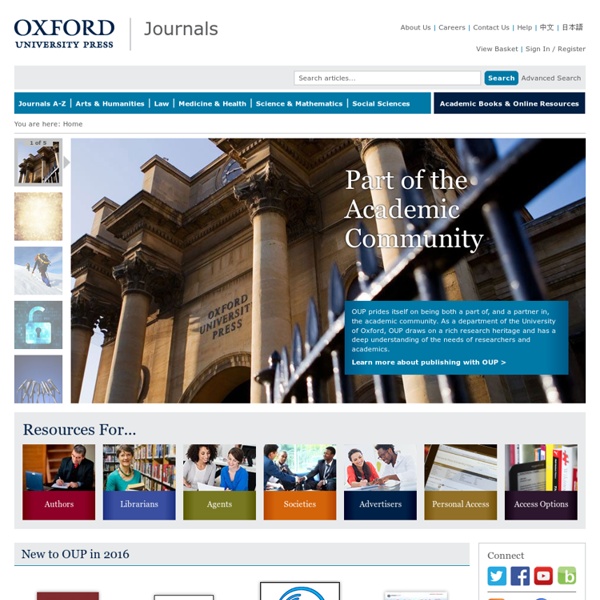



6 of The Best Web Tools for Organizing and Managing Citations, References and Bibliographies April 1, 2015 One of the onerous parts in essay and academic writing is the bibliography section. Managing, organizing and citing references can sometimes be a real challenge especially if you don't keep track of what and who you cite. The last thing you would want after a strenuous writing task is a messy bibliography with one reference missing page numbers the other needs publication date or, worse of all, having to go back to your sources to check for the source of that quotation you included in your conclusion. If you find yourself constantly grappling with problems such as these, the web tools below are absolutely something you might need to consider. 1- Zotero "Zotero collects all your research in a single, searchable interface. RefWorks -- an online research management, writing and collaboration tool -- is designed to help researchers easily gather, manage, store and share all types of information, as well as generate citations and bibliographies.3- Mendeley 5- EasyBib
The Development of Audiovisual Multisensory Integration Across Childhood and Early Adolescence: A High-Density Electrical Mapping Study + Author Affiliations Address correspondence to Dr Sophie Molholm, Departments of Pediatrics and Neuroscience, Albert Einstein College of Medicine, Van Etten Building—1C, 1225 Morris Park Avenue, Bronx, NY 10461. Email: sophie.molholm@einstein.yu.edu. Abstract The integration of multisensory information is essential to forming meaningful representations of the environment. Introduction The ability to construct meaningful internal representations of the environment depends on integrating and segregating the myriad multisensory inputs that enter the nervous system at a given moment. Still, optimal benefit from multisensory inputs often requires experience, and there is every reason to expect that there is a typical developmental course for the “tuning-up” of multisensory integration (MSI) (Lewkowicz 2002; Bair et al. 2007; Lewkowicz and Ghazanfar 2009). To date, knowledge of the development of the neurophysiological processes that underlie MSI comes largely from animal studies. Participants
Vesmír - přírodovědecký časopis. Věda, příroda, medicína, technologie Oxford Journals ScienceOpen An Investigation of Methods to Detect Feigned Reading Disabilities + Author Affiliations *Corresponding author at: Department of Psychology, Queen's University, Kingston, Ontario, Canada K7L 3N6. Tel.: +1-613-533-6311; fax: +1-613-533-6564. E-mail address: harrisna@queensu.ca (A.G. Abstract No clinically proven method currently exists to determine if a test taker is feigning or exaggerating symptoms of a specific reading disability (RD) for potential secondary gain (i.e., extra time on examinations, access to bursary funds, or tax benefits). Introduction Students with disabilities are entering the post-secondary educational sector in increasing numbers (Blackorby & Wagner, 1996; Canadian Association of Disability Service Providers in Postsecondary Education, 1999; Harrison & Wolforth, 2006; McGuire, 1998). Students may exaggerate symptoms for a number of reasons and may not always qualify for the label of “malingering” (Kane, 2008). Osmon, Plambeck, Klein, and Mano (2006) were the first to investigate ways to identify those feigning a reading disorder.
Web of Science - Starting New Session... WEB OF Science Your ideal single research destination to explore the citation universe across subjects and around the world. Web of Science provides you access to the most reliable, integrated, multidisciplinary research connected through linked content citation metrics from multiple sources within a single interface. And since Web of Science adheres to a strict evaluation process, you can be assured only the most influential, relevant, and credible information is included - allowing you to uncover your next big idea faster. Web of Science connects the entire search and discover process through: Premier Multidisciplinary Content Emerging Trends Subject Specific Content Regional Content Research Data Analysis Tools Learn more about Web of Science Take advantage of many great features when you register. Learn more about the benefits of registering for an account
Home Page How Google Docs' research tool removes drudgery from reports and presentations You’re frantically racing toward a deadline to complete a multi-page report or slideshow presentation, but research is slowing you down. Not tracking down the information so much as the constant bouncing between your work document and web browser, and cycling through the confusing morass of open tabs to find that webpage or image you need. If you use Google’s free office suite, there’s an easier way—a built in research tool that lets you search for the information you need and easily add it to the Google Doc or Google Slide you’re working on without having to leave the page. Here’s how to get started. Access the research tool Google offers three ways to access the research tool pane. Unless you’ve accessed it via selected text, the first time you open the research tool it will display a list of topics based on the content of your document or slide. Everything This is the default search and casts the widest possible net across the ‘Net. Images Scholar Quotes Dictionary Personal Tables
Retrocochlear function of the peripheral deafness gene Cacna1d + Author Affiliations ↵*To whom correspondence should be addressed at: Department of Neurogenetics, Carl von Ossietzky University Oldenburg, 26111 Oldenburg, Germany. Tel: +49 4417983932; Fax: +49 4417985649; Email: hans.g.nothwang@uni-oldenburg.de Received April 12, 2012. Accepted May 30, 2012. Abstract Hearing impairment represents the most common sensory deficit in humans. Hearing disorders are the most common sensory deficit in humans and represent a heavy social and economic burden to individuals and societies alike (1). In many cases of hearing impairment, hearing devices such as cochlear implants are prescribed to achieve well-functioning hearing. One of the essential genes in inner ear cells is Cacna1d, which encodes the pore-forming α1D subunit (Cav1.3) of L-type voltage-dependent calcium channels (LTCCs) (10). Generation and analyses of Cacna1d-eGFPflex, EIIa::Cre;Cacna1d-eGFPflex and Egr2::Cre;Cacna1d-eGFPflex mouse lines Figure 1. Figure 2. Figure 3. Figure 4. Figure 5. Figure 6.